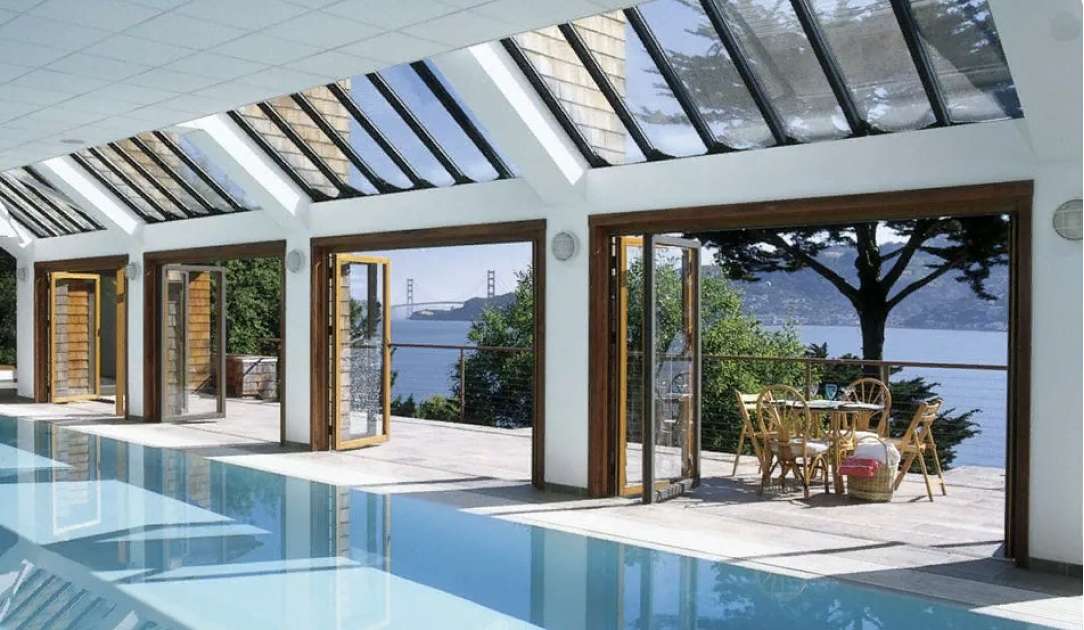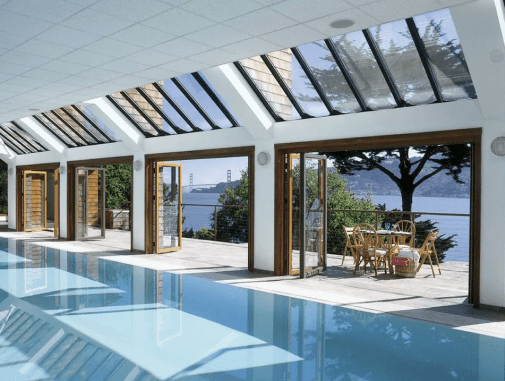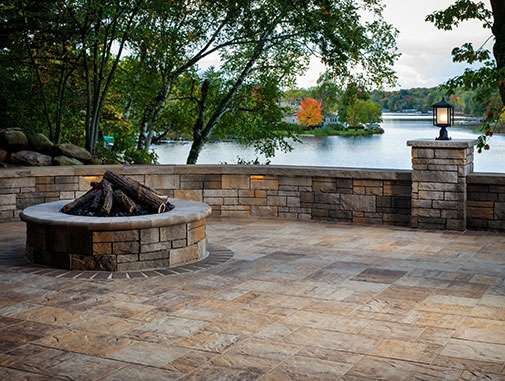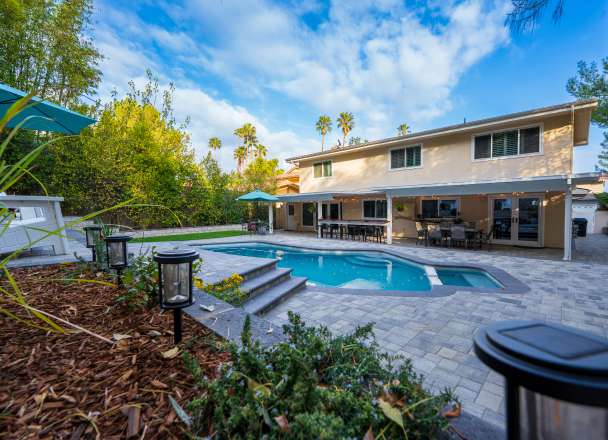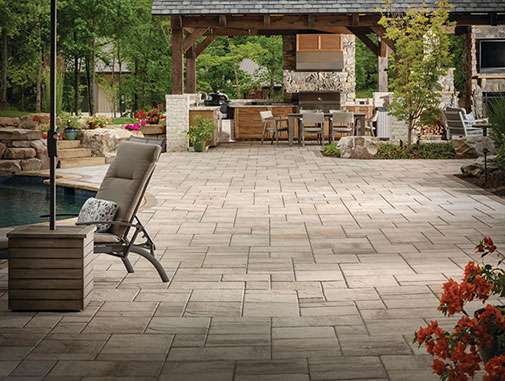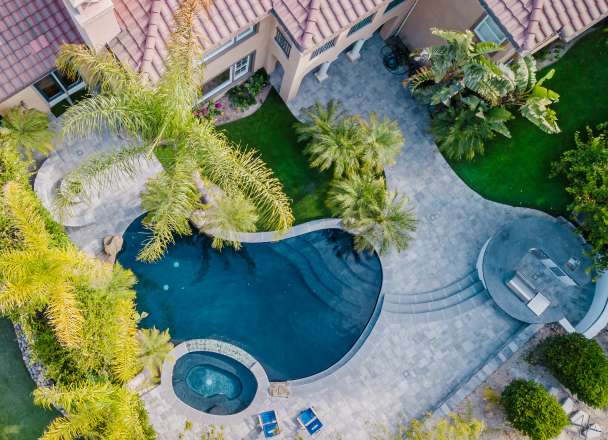Backyard Remodeling: Deck vs Patio
- #Exterior Remodeling
- #Outdoor Living
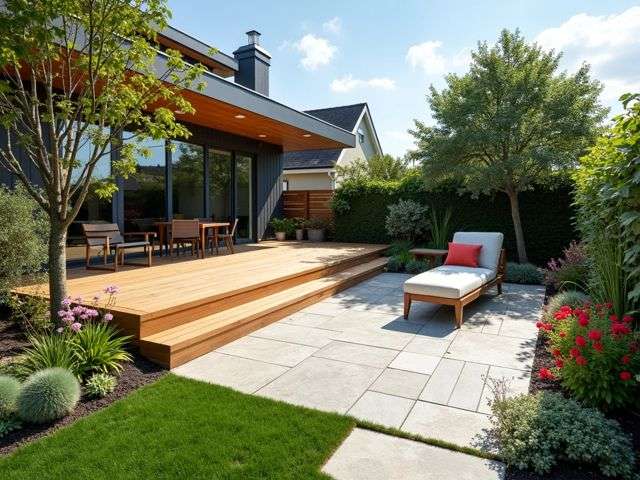
- Smooth Plaster Finish
- Shimmering Pebble Finish
When deciding between a deck and a patio for backyard remodeling, consider your budget and maintenance preferences. Decks typically offer higher resale value but come with higher costs and maintenance, whereas patios provide a more economical and low-maintenance option.
Deck vs Patio: Understanding the Basics
When enhancing outdoor living spaces, a choice between a deck and a patio often arises for families looking to expand their home’s functionality. Understanding the fundamental differences between these two options can guide your decision.
A deck is an elevated structure connected to your house, typically supported by beams, joists, and posts. This structure is ideal for backyards with uneven terrain, as it allows families to enjoy elevated views. Construction materials for decks include wood, metal, and composite options. Wood, a classic choice, can be susceptible to moisture issues and may require regular staining and sealing every couple of years. Components like pressure-treated lumber often face challenges such as rot, mold, and UV fading. Composite decking combines wood and recycled materials, presenting a lower-maintenance alternative. The average cost to build a composite deck, around $12,600 for a 320-square-foot area, reflects its popularity and durability. Beyond functionality, decks can bring increased resale value, making them a worthwhile investment if properly maintained.
In contrast, a patio is a ground-level area, typically paved, which can either connect to or stand apart from the house. Suitable for flat backyards, patios give families the option for increased privacy, as plants or walls can block views. Common materials such as concrete, pavers, or brick provide durability, but they may require occasional repair due to cracking or staining. The average cost for a patio, typically around $5,400 for a 12×18-foot space, makes it a more economical choice compared to a deck. Maintenance is easier as well; a simple wash with a hose or pressure washer once a year usually suffices.
Each option offers unique aesthetics that can complement your home’s style. Decks provide an inviting natural wood look, though they may fade over time, while patios can appear cold without thoughtful landscaping. Families need to weigh performance, costs, and how the outdoor space will be utilized to make an informed choice that fits their lifestyle.
Ultimately, whether deciding on a deck or a patio, it’s all about personal preference, budget, and the intended use of the space. Each brings distinct benefits, ensuring that families can create the ideal outdoor environment tailored to their needs.

Cost Comparison: Decks and Patios
When deciding between building a deck or a patio, cost is a key factor for families looking to enhance their outdoor space. Generally, patios emerge as the more economical choice.
For patios, the installation cost typically ranges from $8 to $20 per square foot, with an average project costing about $3,620. This affordability stems from the use of common materials such as concrete, stone, or brick, which do not require the structural permits and inspections that decks usually need. The simpler construction processes for patios, like excavation and leveling, also contribute to lower labor costs.
Decks can be significantly pricier, usually costing between $30 and $60 per square foot. The average total expense for constructing a deck is around $7,900. Decks are often elevated, requiring complex construction techniques including framing and railing installation, which raises both labor and material costs.
Maintenance is another important factor. Wooden decks demand regular upkeep, including staining and sealing to fend off issues like rot and warping. While composite decks require less maintenance, they come with a higher initial cost. In contrast, patios generally need minimal maintenance, with simple routine cleaning being their main requirement.
When evaluating durability, patios tend to outlast decks. Patios made from robust materials can endure for up to 100 years, whereas wooden decks typically last only 10 to 20 years. Although composite decks can extend a bit longer, they still fall short compared to the longevity of patios.
Homeowners should also consider return on investment (ROI). Decks often provide a higher ROI, typically around 70% when selling a home, while patios offer an ROI of about 50%. This makes decks appealing for those who might plan to sell in the near future.
While decks present a higher potential return, patios offer a more budget-friendly option with lower initial costs and maintenance needs. Families should carefully weigh these factors against their individual circumstances and preferences when making a decision. Consulting with a professional contractor can also provide valuable insights tailored to their unique situation.
Maintenance Needs: Choosing What Suits You
When choosing between a deck and a patio for your backyard, maintenance needs play a significant role in decision-making. Both structures have unique requirements that can affect how much time and money you’ll need to invest over the years.
Patios are often made from durable materials like concrete, pavers, or brick. These materials generally withstand weather well, but they can crack if not laid on a solid foundation or during extreme weather. Regular cleaning with a pressure washer or garden hose is advised to prevent staining, mold, and mildew buildup. Compared to decks, patios demand less overall maintenance, making them a good choice for busy families. An annual hose wash is often all that’s needed, with occasional checks for cracks to manage.
Decks, particularly those constructed from traditional wood, require more effort. Wood materials, like pressure-treated lumber, need careful upkeep to fend off rot and decay. Maintenance typically includes power washing every year and staining or sealing every two years to maintain their integrity. This routine can become quite time-consuming and costly, especially in regions with harsh weather that may accelerate wear and tear. Furthermore, if the deck isn’t cared for correctly, issues like warping, fading, or splintering can arise, necessitating even more significant repairs.
For those looking for lower maintenance, there’s composite decking. This material brings high durability and resistance to mold and mildew, needing almost no sealing or sanding. With minimal maintenance demands, it allows families to enjoy leisure time rather than focusing on upkeep.
Consider cost as well. While patios initially may come with lower expenses and maintenance costs, decks can offer a higher return on investment (ROI)—72% for wooden decks and 66% for composite. A well-maintained deck can significantly boost your home’s resale value.
Families seeking minimal upkeep might lean towards patios due to their straightforward maintenance requirements and durability. In contrast, those willing to invest time and energy into upkeep might prefer the aesthetic appeal and potential value of a well-maintained deck, especially composite options that offer long-lasting beauty with less effort. Each choice carries its unique advantages, and understanding these maintenance needs is vital for making the best decision for your growing family’s outdoor space.

Permits and Restrictions: What to Know
Building a deck or patio is an exciting project for any growing family, but understanding the necessary permits and regulations is essential to ensure a smooth construction process. Navigating the requirements can differ significantly between decks and patios.
A building permit is typically required for most deck projects, especially if the deck is over 30 square feet or valued over $1,000. This permit acts as an official authorization from your local government, confirming that your construction meets safety standards, building codes, and local regulations. Without proper permits, you may face various consequences including fines and potential removal of your structure. The cost for such permits varies widely but usually falls between $100 and $350 depending on the project’s scope.
Patio installations often entail a similar process to decks, requiring permits primarily for permanent structures. While some minor, non-permanent patios may not need permits, it’s wise to check with local authorities. Like deck permits, patio permits serve to ensure that your structure complies with safety and design codes.
One must also be mindful of local building codes, which dictate the specifics for construction:
- For decks, these codes outline regulations regarding size, placement, and structural integrity. Compliance with codes about railing heights and staircase designs is critical as well.
- Patios, being ground-level structures, typically have fewer restrictions, yet still adhere to local codes. Ensure your plans address size and distance from property lines to prevent complications.
It’s worthwhile to craft thorough and detailed plans when applying for your permit. These plans should highlight accurate measurements, specific materials intended for use, and layout details, such as footings. Preparing these detailed documents simplifies the approval process and expedites construction.
Professional help can be a game-changer in navigating the permitting process. Experienced builders not only assist in obtaining the necessary permits but also ensure that your project runs smoothly. Agencies like EHD Builders specialize in backyard remodeling, providing the expertise to manage complex regulatory requirements.
Stay ahead of potential issues by double-checking that you have all required permits and that your construction complies with local regulations. This diligence will not only protect your investment but also enhance the enjoyment and value of your outdoor living space.

FAQ
What is the difference between a deck and a patio?
A deck is an elevated structure connected to a house, usually built with materials like wood, metal, or composite. It is ideal for uneven terrain and often provides scenic views. In contrast, a patio is a ground-level area, typically paved, that can be attached to or separate from the house. Patios are more suitable for flat backyards and can offer increased privacy depending on their design.
Which is more cost-effective, a deck or a patio?
Patios generally emerge as the more economical choice, with installation costs typically ranging from $8 to $20 per square foot. The average cost for a patio is around $5,400 for a standard size. Decks are significantly pricier, usually costing between $30 and $60 per square foot, with an average expense of about $7,900.
What are the maintenance requirements for decks and patios?
Patios require minimal maintenance, mainly needing a wash with a hose or pressure washer once a year. In contrast, decks—especially those made of wood—demand regular upkeep, including power washing annually and staining or sealing every couple of years to prevent rot and fading. Composite decking requires less maintenance but involves a higher initial investment.
How long do decks and patios typically last?
Patios can endure for up to 100 years, as they are crafted from robust materials like concrete, pavers, or brick. Wooden decks generally last 10 to 20 years, while composite decks may last longer but still do not match the longevity of patios.
What kind of return on investment can be expected from decks and patios?
Decks typically provide a higher return on investment (ROI), around 70% when selling a home, while patios offer an ROI of about 50%. This makes decks appealing for homeowners planning to sell in the near future, despite their higher initial costs.
Do I need a permit to build a deck or patio?
Yes, building permits are usually required for most deck projects, especially if they exceed 30 square feet or are valued over $1,000. Patio installations may also need permits, primarily for permanent structures. It’s essential to check local regulations to ensure compliance, as failure to obtain the necessary permits can lead to fines or removal of the structure.
